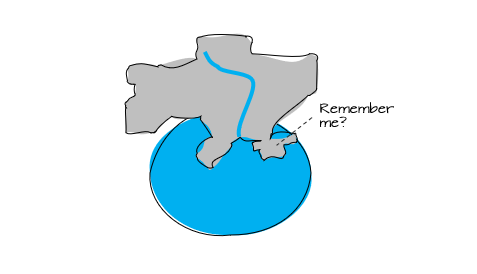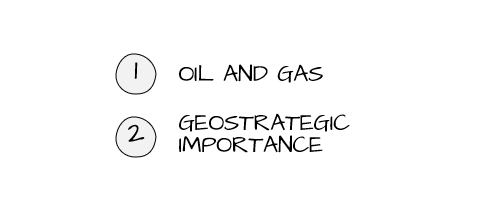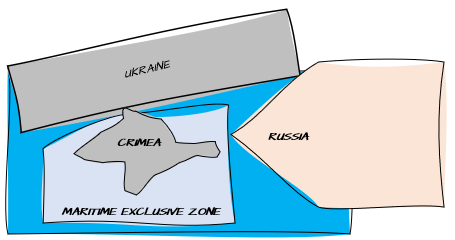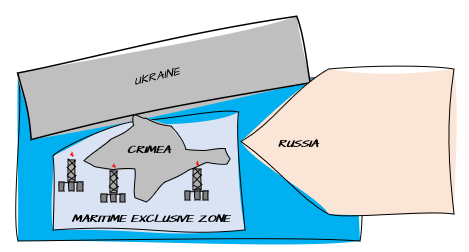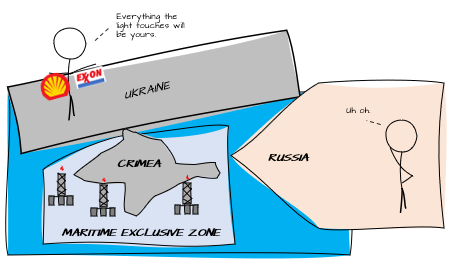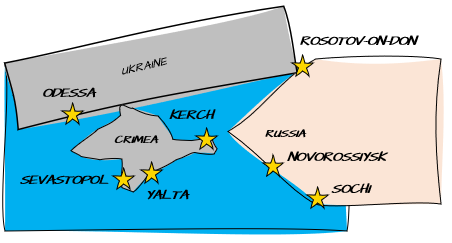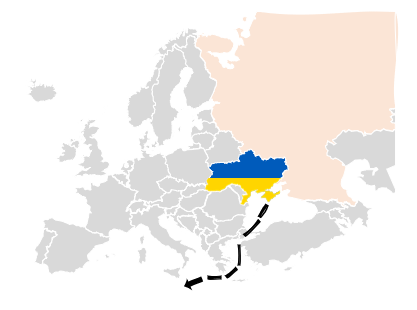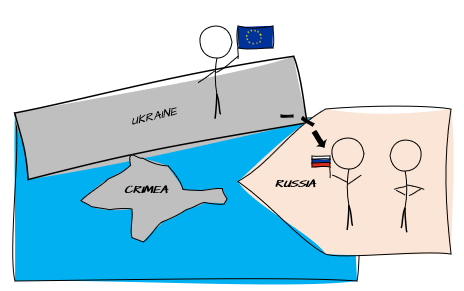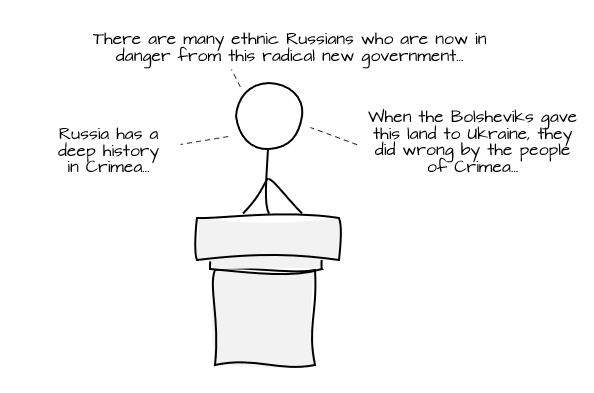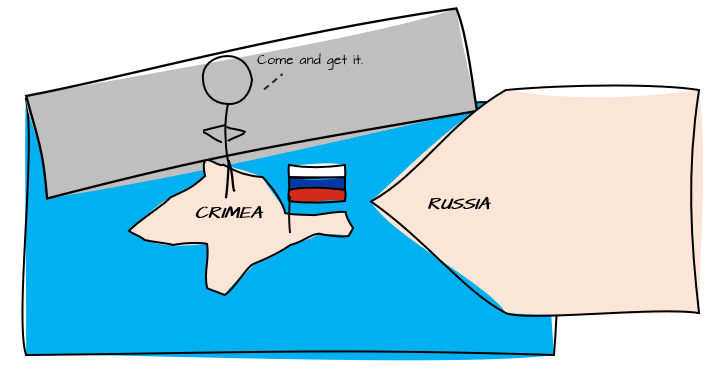So what’s happening in Ukraine? Part 2: The annexation of Crimea
This is the second post in a series about the situation in Ukraine; they are chronological, so if you haven’t read the first one start here: Part 1: How did we get here?
This is not meant to be a definitive history, nor a comprehensive analysis of the conflict or either country. The goal is to help simplify a complex and important topic and provide readers with a baseline appreciation for the situation.
In the last post we focused on an overview of Ukraine’s history, emphasizing key junctures in its relationship with Russia.
This post centers on the 2014 conflict between Russia and Ukraine over the territory of Crimea.
First let’s talk a bit about why Crimea is so important to Russia.
The primary source of its value to Russia is in two features:
Oil and Gas
Crimea is home to 2/3rds of Ukraine’s coastline and the vast majority of its maritime exclusive zone.
This gives Crimea exclusive rights to anything that happens to be in that area.
What happens to be in that area is 80% of Ukraine’s potential offshore oil and gas reserves.
In 2012, the Ukrainian government began granting exploration and drilling rights to international oil giants Shell and Exxon. This would have been a boon for the country and would have challenged Russia’s place as the region’s primary petrol state.
Geostrategic Importance
Crimea also has one of the few year-round ice-free ports in the city of Sevastopol.
Unrestricted access to this port, and by extension the Black and Mediterranean Seas, would be beneficial to Russia.
In addition to supporting exports, the port would create year-round access for the Russian navy to add a little muscle and protect its military and economic interests.
So what happened?
Now that we’ve established the value of the territory, let’s discuss the chain of events that led to its annexation.
In 2012, the president of Ukraine was Viktor Yanukovych. He was pro-Russian, and actively kept domestic and foreign policy in-line with Moscow.
During his reign, Ukraine was facing an economic crisis and had been in talks that would see Ukraine strike a pact with the EU.
In what seemed to the world like a last-minute change, the EU deal was scrapped in favour of a $15B bailout from Russia and a discount on Russian gas by approximately 1/3.
Many Ukrainians felt that their president had just sold their country to Russia, and it sparked a revolution in February 2014.
This revolution toppled the pro-Russian government, forcing Viktor Yanukovych to flee to Russia.
In his place a pro-EU / pro-Western government came to power.
This was not the result Moscow was looking for, and they reacted quickly.
After an all-night meeting between Putin and deposed Ukrainian president Viktor Yanukovych, the decision was made to ‘reclaim’ Crimea.
Within a week, masked Russian troops entered Crimea capturing the Supreme Council (Crimean parliament) and strategic sites across the region. The Council of Ministers of Crimea was dissolved, and a new pro-Russian Prime Minister was installed.
The newly formed Supreme Council declared Crimea to be an independent, self-governing entity. They held a highly controversial referendum on March 16th, resulting in a majority vote to join the Russian Federation.
If you’re wondering ‘how did the Russian leadership sell all of this to the civilian population’, it went something like this:
Did it work? Surprisingly well if you are to believe Putin’s polling numbers. For those that it didn’t convince, more persuasive tactics were deployed.
How did Russia benefit from all this?
1) With the annexation of Crimea into the Russian Federation, Russia was able to secure its place as the region’s primary petrol state, removing the possibility of Ukraine challenging their resource supremacy. They also seized existing refinery equipment and infrastructure.
Shortly after the annexation, Shell and Exxon backed out of their contracts with the Ukrainian government.
2) Ukraine is unlikely to reclaim the territory through military means, given the number of Russian troops in the peninsula, nor are there any existing international mechanisms for overturning the result of the 2014 referendum.
3) NATO does not typically admit new countries that are in a current state of conflict or possess existing border disputes. This is to protect NATO from being immediately drawn into an existing conflict. By taking Crimea a border dispute was created with Ukraine, creating a significant roadblock in Ukraine’s quest to join NATO.
International Reaction to the Annexation
The UN General Assembly passed a resolution declaring the referendum illegal and invalid. Financial sanctions were levied against the Russian Federation and they were removed from the G8 (now the G7)
To this day, only Afghanistan, Belarus, Bolivia, Cuba, North Korea, Kyrgyzstan, Nicaragua, Russia, Sudan, Syria, and Zimbabwe have directly recognized the result of the referendum
Russia’s annexation of Crimea didn’t exactly send a signal to the Kremlin that forcefully taking Ukrainian territory came with insurmountable risks.
In the next piece we will dive into other events that lead to the 2022 invasion.
Think someone in your network can benefit from an overview of Russia’s annexation of Crimea? Share below!

